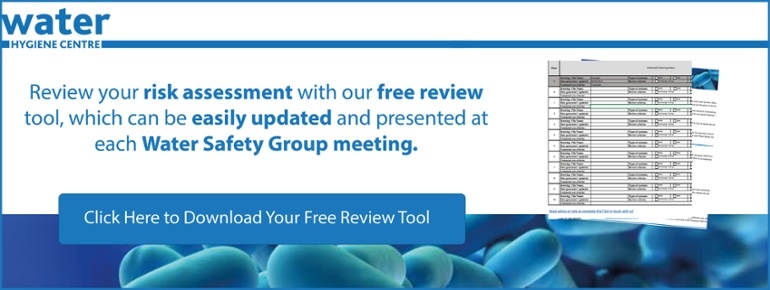Water is undoubtedly one of our most precious resources, and ensuring its quality and safety is of utmost importance. We rely on a complex network of pipes, valves, and connections to deliver clean water to our homes, schools, businesses, and hospitals. However, a potential threat to this vital resource comes in the form of backflow, which can contaminate our water supply and pose severe health risks.
In this blog, we will explore the significance of backflow protection and why it is essential for safeguarding our water.
Understanding Backflow in Water Systems
Backflow occurs when the flow of water reverses its normal direction, flowing back into the public wholesome water system. This reversal can happen due to changes in pressure, such as a sudden drop in the water supply or an increase in pressure from an alternative source. This reversal creates a serious concern as it can allow contaminants, chemicals, or pollutants to enter our drinking water, potentially endangering public health.
The Importance of Backflow Protection:
- Preserving Water Quality: Backflow protection devices function as barriers, preventing contaminated water from flowing back into the main water supply. By installing these devices at critical points in the plumbing system, we can effectively maintain the integrity and safety of our water. This directly contributes to ensuring a clean and reliable water supply, which is important to overall public health and well-being.
 Preventing Cross-Contamination: Backflow incidents can occur in various scenarios, such as during firefighting, irrigation, or industrial processes. Without proper backflow prevention measures, these activities can inadvertently introduce harmful substances, fertilizers, pesticides, or even human waste into the water supply. By implementing correct backflow protection in line with “The Water Supply (Water Fittings) Regulations 1999”, we can defend against such cross-contamination, safeguarding both human and environmental health.
Preventing Cross-Contamination: Backflow incidents can occur in various scenarios, such as during firefighting, irrigation, or industrial processes. Without proper backflow prevention measures, these activities can inadvertently introduce harmful substances, fertilizers, pesticides, or even human waste into the water supply. By implementing correct backflow protection in line with “The Water Supply (Water Fittings) Regulations 1999”, we can defend against such cross-contamination, safeguarding both human and environmental health.
- Regulatory Compliance: The Water Supply (Water Fittings) Regulations 1999 detail the distinct types of backflow prevention required; whether these are physical or mechanical, referring to different fluid categories dependent on the level of risk (see below extract Schedule 1 Fluid Categories - The Water Supply (Water Fittings) Regulations 1999)
Note: In Scotland, the Water Regulations are The Water Supply (Water Fittings) (Scotland) Byelaws 2014
SCHEDULE 1
(Regulation 1)
FLUID CATEGORIES
Fluid category 1
Wholesome water supplied by a water undertaker and complying with the requirements of regulations made under section 67 of the Water Industry Act 1999 (1)
Fluid category 2
Water in fluid category 1 whose aesthetic quality owing to -
(a) a change in its temperature, or
(b) the presence of substances or organisms causing a change in its taste, odour or appearance, Including water in a hot water distribution system.
Fluid category 3
Fluid which represents a slight health hazard because of the concentration of substances of low toxicity, including any fluid which contains-
(a) ethylene glycol, copper sulphate or similar chemical additives, or
(b) sodium hypochlorite (chloros and common disinfectants).
Fluid category 4
Fluid which represents a significant health hazard because of the concentration of toxic substances, including any fluid which contains -
(a) chemical, carcinogenic substances or pesticides (including insecticides and herbicides), or
(b) environmental organisms of potential health significance.
Fluid category 5
Fluid representing a serious health hazard because of the concentration of pathogenic organisms, radioactive or very toxic substances including and fluid which contains -
(a) faecal material or other human waste;
(b) butchering or other animal waste; or
(c) pathogens from any other source.
- Cost-Effective Solution: While implementing backflow protection systems may require an initial investment however the long-term benefits will far outweigh these costs. By preventing contamination and the potential for widespread health issues, backflow protection reduces associated medical expenses, water treatment costs, and the need for extensive remediation efforts. It is a proactive measure that promotes sustainability and economic savings overall.
Conclusion
The significance of backflow protection in our water systems cannot be overstated when managing water systems. By acknowledging the risks associated with backflow incidents and acting appropriately to prevent them, we actively contribute to the preservation of clean, potable water for ourselves and future generations. Whether through the installation of backflow prevention devices, periodic inspections, or raising awareness about this issue, each of us can play a pivotal role in protecting our most valuable resource – water.
Remember, a little effort today can go a long way in securing a healthier and safer future!
Feel free to reach out if you have any questions about the issues mentioned above or if you would like to consult with one of our experts on water hygiene.
Editors Note: The information provided in this blog is correct at the date of original publication – September 2023
© Water Hygiene Centre 2023









